Spain is a country of endless variety, where each city feels like a new adventure. It has landmarks like the Alhambra in Granada and the Sagrada Familia in Barcelona, and iconic festivals like La Tomatina, San Fermín, and Ibiza’s nightlife. Cities like Madrid and Seville give visitors a taste of flamenco, tapas, and historic cathedrals.
Here are 22 fun facts that show why Spain is a place you must visit!
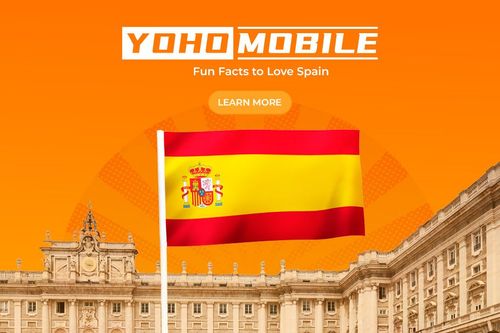
Image by Freepik
Spain Means "Land of Rabbits"
The name “Spain” comes from the Roman name Hispania, which some think means “Land of Rabbits.” The Romans saw many rabbits on the Iberian Peninsula and chose this name. Although its origins are still disputed, it is thought that the Phoenicians called the area “I-Shaphan-im,” or “land of hyraxes” (mistaken for rabbits).
Over the years, rabbits became a symbol of the region, even appearing on some Roman coins for Hispania. Today, Spain’s past and wildlife are still linked to this name’s origin.
Spain has 47 UNESCO sites.
Spain has 47 UNESCO World Heritage Sites, including cultural, historical, and natural landmarks. Some examples are the Alhambra in Granada, Roman structures like the Aqueduct of Segovia, and religious sites such as Burgos Cathedral.Spain’s historic cities, like Toledo and Salamanca, are home to unique medieval buildings, while modern cities like Barcelona host works by architect Antoni Gaudí. Spain also has natural UNESCO sites, like Doñana National Park and the volcanic Teide National Park.
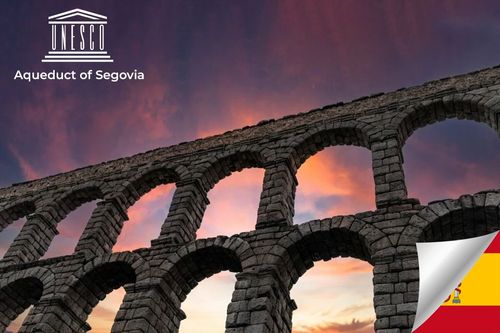
Seville Has the Largest Gothic Cathedral
Seville Cathedral, the Cathedral of Saint Mary of the See, is the biggest Gothic cathedral in the world. It was built on the site of an old mosque and finished in the early 1500s. Seville Cathedral, a key religious site in Spain today, is also a UNESCO World Heritage Site.
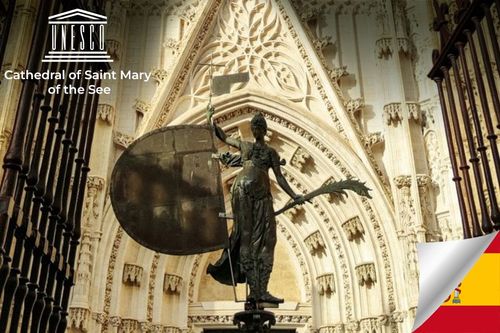
Fun Facts About Spain: Seville Cathedral holds Christopher Columbus’s tomb and has the Giralda, a bell tower that was once a minaret.
Southern Spain Takes "Siestas" to Escape the Heat
An interesting fact of the Spanish culture, taking short naps, or siestas, is common, especially in summer. This relaxing practice is popular in the South, where the weather gets very hot. Many businesses close from around 2 pm to 5 pm so people can rest during the hottest hours and avoid the midday heat.
Siestas are a part of daily life in many small towns and rural areas, though larger cities may keep a strict work schedule.
Spain Hosts The World’s Biggest Food Fight
Spain holds La Tomatina, the world’s largest food fight in Buñol near Valencia. The event began in 1945 and now brings locals and tourists alike each August. Participants gather to throw over 100 tons of tomatoes at each other, so tarps cover the streets for easier cleanup. La Tomatina lasts about an hour until everyone is covered in tomato pulp and goes to wash off in the river or at town showers.
Spain Has a Running of The Bulls Festival
Another thrilling fun fact about Spain is the San Fermin festival, known for the running of the bulls in Pamplona. This nine-day event began in the 14th century and involves daily bull runs where people run ahead of bulls through narrow streets.
San Fermin festival also includes religious ceremonies, music, dancing, and fireworks. Participants wear white clothes with red scarves, honoring Saint Fermin, the city’s patron.
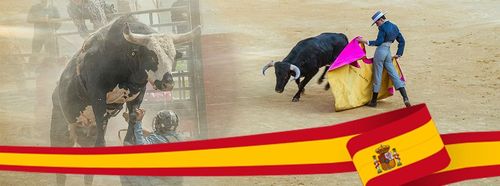
Fun Facts About Spain: Spain has many bullfighting arenas, known as plazas de toros. Some of the most famous are Las Ventas in Madrid and La Maestranza in Seville, though it's become increasingly controversial.
Flamenco Dance Originated in Spain
Flamenco dance, a key part of Spanish culture, began in Spain’s Andalusian region. Although Flamenco was born in Spain, it has Romani, Moorish, and Jewish influences.
Flamenco has three parts: “cante” (singing), “baile” (dance), and “toque” (guitar). First performed in small spaces, it later became popular in the 1800s in cafés and theaters.
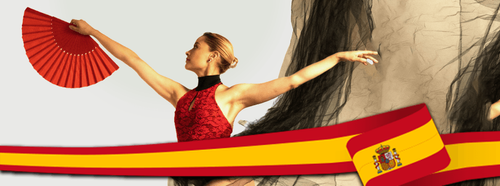
Fun Facts About Spain: Flamenco is recognized by UNESCO as Intangible Cultural Heritage.
Spain Has Europe’s Only Desert
Spain has the only desert in Europe, the Tabernas, in Almería, Andalusia (280 square kilometers). Its dry climate reminds us of North African deserts. Rain is rare here, with hot summer days and cooler nights.
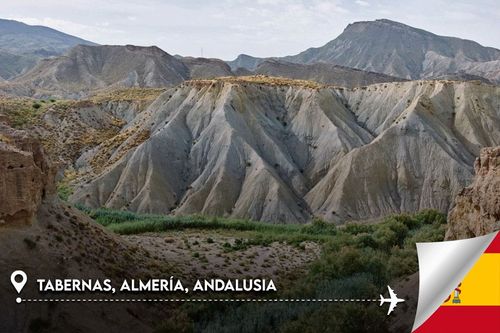
Fun Facts About Spain: The Tabernas Desert in Spain has been used as settings for many films. Some famous include "The Good, the Bad and the Ugly", "Indiana Jones and the Last Crusade", "Lawrence of Arabia" and "Cleopatra."
Spain's Ibiza is a Global Party Island
Ibiza, an island in Spain’s Balearic Islands, is a key destination for electronic music and nightlife. Renowned clubs like Pacha, Amnesia, and Ushuaïa draw large summer crowds, hosting top DJs such as Tiësto, David Guetta, and Armin van Buuren. Major festivals in Ibiza include the Ibiza International Music Summit (IMS) and Elrow Ibiza.
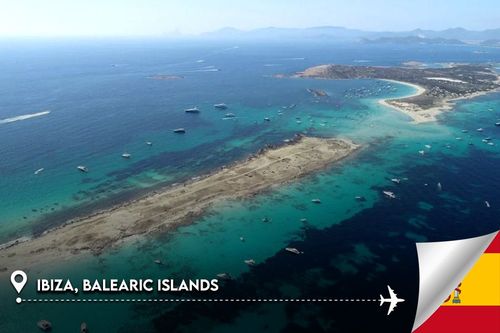
Sagrada Familia in Spain is Still Unfinished
The Sagrada Familia in Barcelona started building in 1882. Architect Architect Antoni Gaudí designed this large church to honor the sacred family but he could not finish it. After Gaudí died in 1926, other architects continued with his plans, but it may finish around 2026, a hundred years after Gaudí’s death.
The Sagrada Familia, mixing Gothic and Art Nouveau styles, is a UNESCO World Heritage site and one of Spain’s top tourist spots.
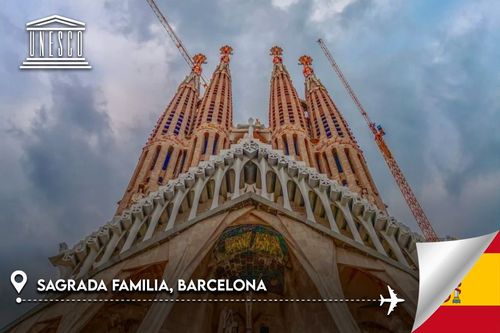
The Alhambra Was Built by Moorish Rulers
Spain has many fun facts throughout its history. One of the most impressive is that the Alhambra, in Granada, Spain, was built by Moorish leaders in the 13th century. It was first a military fortress during the Nasrid Dynasty and later evolved into a royal palace with extensive gardens. Today, it is a UNESCO World Heritage Site and a must-visit in Spain.
The Alhambra was a sign of Islamic strength in Spain until 1492 when it fell to Ferdinand and Isabella. The Nasrid rulers wanted to show Islamic building styles, with interesting stuff like tile work, stucco, and the Court of the Lions. Key areas include the Nasrid Palaces, the Generalife Gardens, and the Hall of the Abencerrajes.
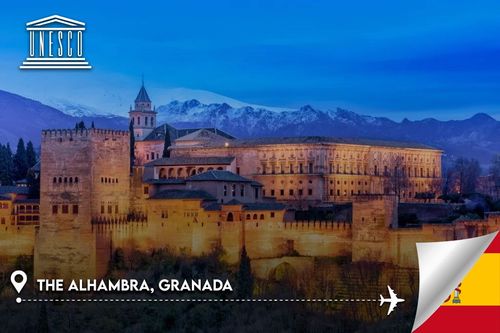
Image by Pexels
Fun Facts About Spain: The Alhambra Inspired Washington Irving’s Writings
Don Quixote is Spain’s Most Famous Novel
Don Quixote, by Miguel de Cervantes, is one of the first modern novels and is an important work in Spanish and global writing. It reflects on real life versus dreams and the idea of heroism. The tale is about an old nobleman, Alonso Quixano, who becomes fixated on stories of knights and decides to be a knight, calling himself Don Quixote. He goes on quests with his squire, Sancho Panza.
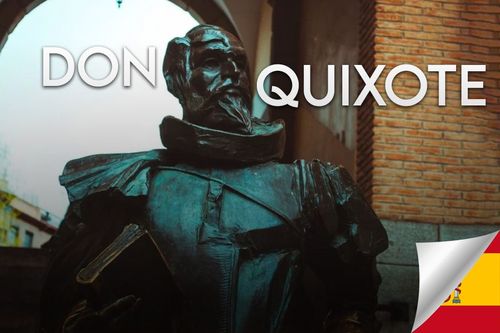
Image by Pexels
Picasso Was Born in Spain
Pablo Picasso, a famous artist of the 20th century, was born in Málaga, Spain. He helped start the Cubist movement and made key works in other styles like Surrealism and Symbolism. Some of his well-known pieces are “Guernica” and “Les Demoiselles d’Avignon.” His new approach to form and perspective changed modern art.
Salvador Dalí Designed His Own Museum
Spain is known for some of the world’s best art museums. In fact, Salvador Dalí, the Spanish Surrealist artist known for eccentricity, built his own museum, the Dalí Theatre-Museum in Figueres, Catalonia. The design shows Dalí’s unique style, with a giant egg and bread loaves on the roof. The museum highlights Dalí’s role in art and his creative vision and attracts many visitors each year.
Other Interesting Facts About Spain’s Museums:
- The Prado Museum in Madrid has over 8,000 paintings.
- Prado’s most famous work is Velázquez’s Las Meninas.
- Reina Sofia houses Picasso's Guernica in Madrid.
- The Guggenheim Bilbao’s design is titanium-clad.
- Spain's museums offer free admission on select days.
- The National Archaeological Museum has artifacts from ancient Spain.
Paella Originated in Valencia, Spain
Paella, Spain’s most famous dish, was created in Valencia, Spain, in the mid-1800s. It is a rice dish made with a type of short-grain rice called “bomba.” The main recipe has chicken, rabbit, green beans, and saffron for color. Paella cooks in a wide, shallow pan over an open flame, creating a crispy layer of rice at the bottom known as “socarrat.”
Paella shows Spanish culinary expertise, making it a well-loved symbol of Spanish food worldwide.
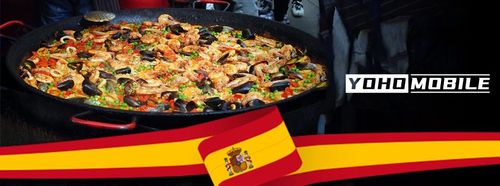
Image by Pexels
In short, the diversity and richness of Spanish cuisine are among the most fun facts about Spain that draw food enthusiasts from around the world.
Tapas Originated as Bar Snacks in Spain
Tapas started in Spain as small snacks with drinks. A fun fact is that the word “tapa” means “lid” in Spanish, referring to how food covered drinks to protect them from dust or bugs. Over time, tapas grew into many types, from olives and cheese to grilled prawns and chorizo, served hot or cold. These small dishes are usually served in bars and restaurants, great for sharing.
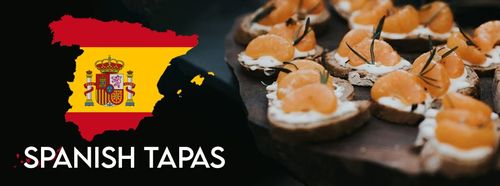
Image by Pexels
Fun Facts About Spanish Tapas: The tradition of tapas in Spain may be from at least the 13th century, some sources even suggest they existed even earlier.
The tapas tradition, a central piece of Spain’s food culture, has spread worldwide and changed how people eat in many places.
Another Fun Fact About Spanish Tapas: Italians have their version of Tapas called Cicchetti, small snacks served with wine in Venice.
Spain Produces 44% of the World’s Olive Oil
Spain is a top olive oil producer, accounting for 44% of the world’s olive oil production. Olive growing has a long history in Spain, and olive oil is key to Mediterranean food and culture. Spain has over 300 million olive trees, with Jaén in Andalusia as one of the main areas for production. The olive oil trade is vital to Spain’s economy and farms.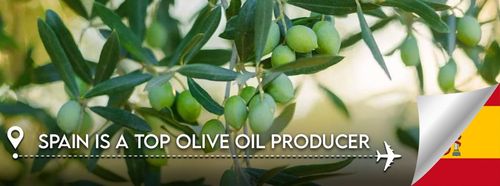
Image by Pexels
Spain Has the World’s 2nd Most Bars
Life in Spain is exciting and filled with many fun facts. For example, Spain has the second-most bars in the world, with about 300,000 bars. Bars can be found on almost every street corner in major cities like Madrid, Barcelona, and Seville. The bar culture is a big part of Spain’s tourism and hospitality. The bar scene is a big part of Spanish life, serving drinks and tapas for locals and visitors.
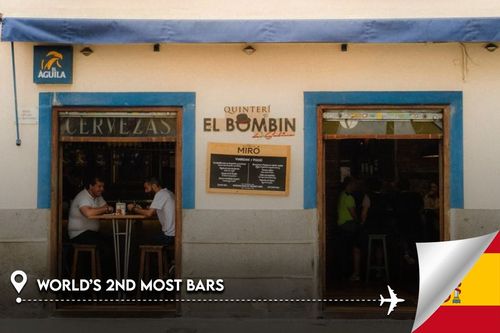
Image by Pexels
Fun Facts About Spain: Spain is home to the world's oldest restaurant, Sobrino de Botín, founded in 1725 in Madrid. It is famous for roast pig and lamb and for hosting notable guest like Ernest Hemingway.
Semana Santa is Spain's Most Important Religious Festival
Semana Santa, or Holy Week, is the main festival in Spain, held in March or April. It marks the Passion of Jesus Christ with processions of religious statues through the streets. Cities like Seville, Malaga, and Granada have the largest events.
Semana Santa, Spain’s important religious and cultural event, draws thousands of visitors each year. The festival ends on Easter Sunday, celebrating the rise of Jesus.
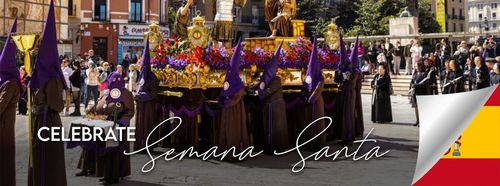
Image by Pexels
Some Historical Facts About Spain
Spain is full of fun facts that make it a unique place in Europe and worldwide. These fun facts about Spain make it a great destination for history lovers.
Spain’s Empire Spanned Four Continents
Spain’s empire once spread across Europe, the Americas, Asia, and Africa. Beginning with Columbus’s voyages, Spain established colonies in much of South America, the Philippines in Asia, North African cities, and even parts of Italy and the Netherlands.
The Spanish Empire was one of the largest ever, influencing language, faith, and culture around the world through exploration and conquest. It reached its height in the 1500s and 1600s, but by the 1800s most colonies became independent, cutting down Spain’s overseas lands.
Columbus Opened Spain’s Route to the Americas
A key figure in Spain’s history is Christopher Columbus, whose four voyages to the New World were sponsored by the Spanish Crown. They even gave him the Title: “Admiral of the Ocean Sea”. His trip opened trade routes between Europe and the Americas and led to the Columbian Exchange, which moved goods, crops, people, and ideas.
Columbus’s journeys changed Spanish exploration and growth and changed history.
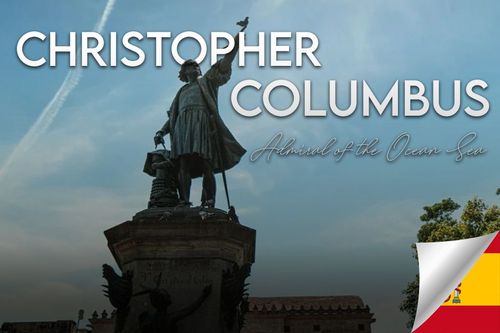
Fun Facts About Spain History: Spain and some Latin American countries celebrates Día de la Hispanidad on October 12 each year. This holiday remembers Columbus's arrival in the Americas in 1492.
Spain’s Democracy Began in the Late 1970s
A more modern milestone in Spain’s history is its transition to democracy in 1975 after dictator Francisco Franco died. King Juan Carlos I helped this change by supporting new laws that allowed political parties and elections.
These changes helped Spain join the European community and connect with other democratic countries, shaping its modern government and society.
Travel Tips: What to Know Before You Go To Spain
These travel tips include some interesting stuff about Spain that will help make your trip more enjoyable.- The main language is Spanish, but people also speak regional languages like Catalan in Catalonia, Basque in the Basque Country, and Galician in Galicia.
- Spain uses the Euro (€) for money.
- Many shops take a break in the afternoon, called a "siesta" usually from 2 pm to 5 pm, especially in smaller towns.
- Lunch is generally served from 1 pm to 3:30 pm, while dinner is late, starting around 9 pm to 11 pm.
- Tips are appreciated but it's not required. Leaving small changes or rounding up the bill is common.
- Be careful of pickpockets in busy areas, especially in tourist spots like Barcelona and Madrid.
- The climate varies; the south gets hot in summer, while the north is cooler and wetter.
- Dress modestly when visiting religious places; here is a complete guide.
- If you need emergency help, call 112.

Image by Vecteezy
Traveling to Spain Soon? Stay Connected With Yoho Mobile
Wherever your travels take you —Stay connected with Yoho Mobile and never miss a moment on your trip!- Instant setup—no physical SIM needed.
- Flexible data plans—local, regional, and global.
- Competitive pricing—best GB rates.
- 24/7 support—help anytime you need it.
- Avoid roaming fees—pay only for what you use.
- Trusted by travelers worldwide
🎁 Exclusive Offer for Our Readers!Get your first order with Yoho Mobile FREE by using the code YOHOREADERSAVEStay connected easily during your trip to Japan with our eSIM. Don’t miss out—this offer ends soon! |
